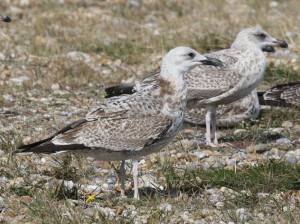
With strong winds from a promising direction at a promising time of the year I headed to Dungeness, on the south coast of England, in hope of seeing some interesting seabirds blown close to the coast. After a couple of hours of looking at a couple of distant Gannets, a pair of Common Scoters and some Sandwich Terns I got bored and decided to take a close look at the groups of gulls loafing around on the stony beach.
I know that a lot of people are intimidated by large gulls, particularly all of the subadult plumages but I have found that if you make the effort to look at them and take some photographs you can start to make sense of them bit by bit. One of the things that make gulls manageable, even for fairly inexperienced birders, is that they are usually very approachable, allowing observers to see them in detail and get some good photos to study further at home. At Dungeness I found a couple of the rarer UK gulls, identifying them at the time but only really being 100% confident when I examined the photos, as well as one bird that is still a little confusing even with photographs. What follows are my photographs from the day and some discussion on the identity of the birds.
The majority of the gulls I saw were Herring Gulls, subspecies argenteus; a mixture of adults and birds in their first few years. The adults are easy enough for most birders to identify but the first year birds can be very confusing indeed, with a wide variety of stages of moult depending on exactly when they fledged from the nest. Below is a first year Herring Gull in flight.
This looks a little paler than it was in real life as I slightly overexposed the photo due to poor light at the time, in order to pick out more feather detail. The real key feature that seperates this bird from some similar species also found in UK are the notched dark centres to the tertials.
One of the things that can make gulls so tricky is the sheer number of them that are often present. At Dungeness there were a lot but I concentrated on just spotting something that stood out as different and after a while I came across this.
This bird stood out to me because it is a first year bird with a bright white head, indicating (in Western Europe) probably a Yellow-legged Gull or Caspian Gull. The rather strange, long black bill suggested Caspian and the fine dark markings on pale grey on the back also suggested this while the dark tertials with a white “V” at the end (albeit rather abraded and enlarged) pretty much confirmed the identification although I did ask a few other people for their opinions and they all agreed with me that it was a first year Caspian Gull, quite a nice find.
Here are a couple more photos of the same bird.
Another young gull was somewhat easier to identify. As I was bamboozling myself with first year Herring Gulls a much larger first year gull landed among them and through size alone was obviously different. Looking at its huge bill it was easy to see that this was a Great Black-backed Gull.
The extremely intricate and well-defined markings on this bird are also helpful but sheer size of the bird and bill structure is enough to be able to name this species. At this time of the year (mid September) most young Great Black-backed Gulls are paler-headed than this but I guess that this bird fledged from the nest fairly late in the nesting season. The adults are very easy to identify and are quite magnificent birds, dwarfing Herring Gulls.
Another dark backed gull also caught my attention. With intense sunlight I wasn’t sure but it seemed to have a very dark back but nowhere near large enough for Great Black-backed Gull. I moved into better light and took the following photograph.
This is obviously a Lesser Black-backed Gull but it appears too dark backed to be the subspecies graelsi which is the default subspecies in UK. The shape of the above bird has a lot in common with the subspecies fuscus but I don’t think it is quite dark enough for that so I think this is an adult intermedius Lesser Black-backed Gull. Another gull enthusiast I know agreed with me but this is not the final word on this bird and if anyone has anything else to say on it then please leave your comments below.
I must confess to getting a bit blinded by gulls but as there was very little around I took one more look through the crowds and noticed another quite white-headed first year bird that deserved a closer look.
I found this a tricky bird but the combination of whitish head, quite heavy black bill, feathers on the back somewhere intermediate between Herring Gull and Caspian Gull along with its structure, that is closer to Herring Gull than Caspian, all pointed towards this being a first year Yellow-legged Gull. The feature that really confirmed this to me was the all dark tertials with a thin white edge but I must admit that I asked for a second and third opinion on this before I was completely happy with it.
I do not consider myself a gull expert but hopefully I can encourage others to spend some time learning about gulls and to not be intimidated by them. The important thing to remember is that you can’t learn everything in one go and there will always be birds that confuse you. Just concentrate on the ones that you can identify. I have learned a lot just by making the effort and particularly by taking photographs that let me study them later and compare to reference material such as; Gulls of the World, a Photographic Guide and Gulls of Europe, Asia and North America.


 September 25th, 2020
September 25th, 2020  Nick
Nick 
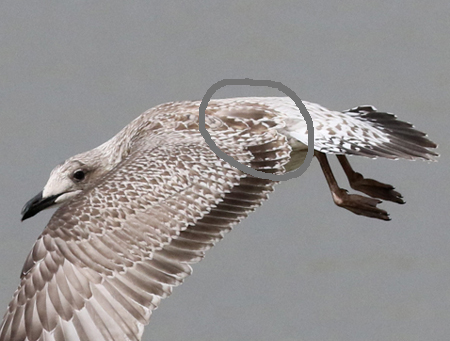
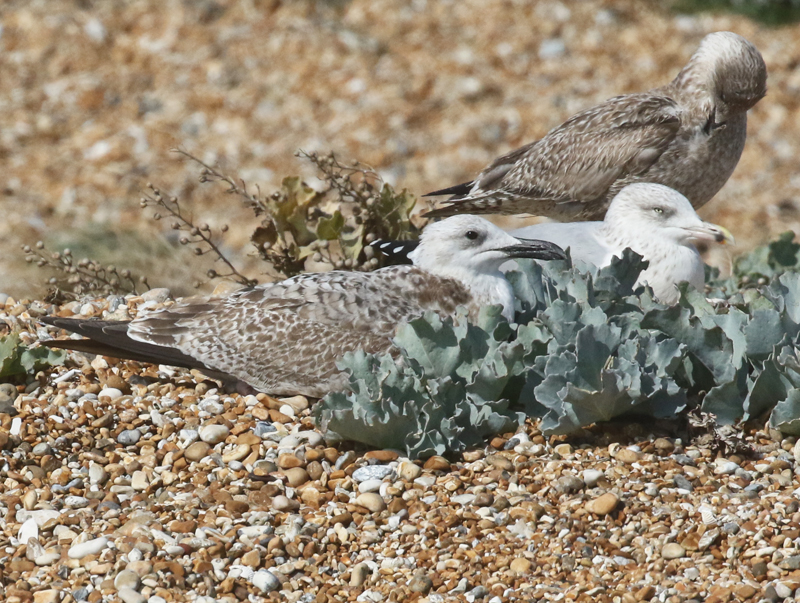


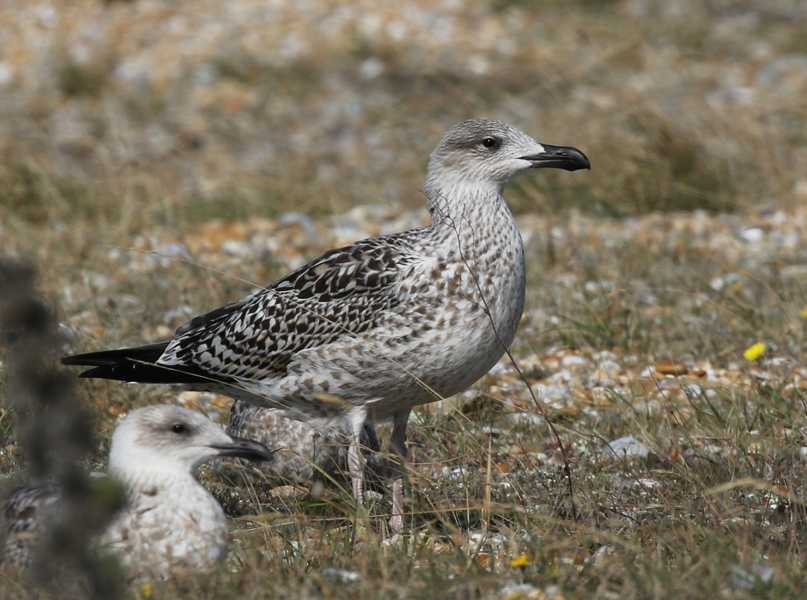

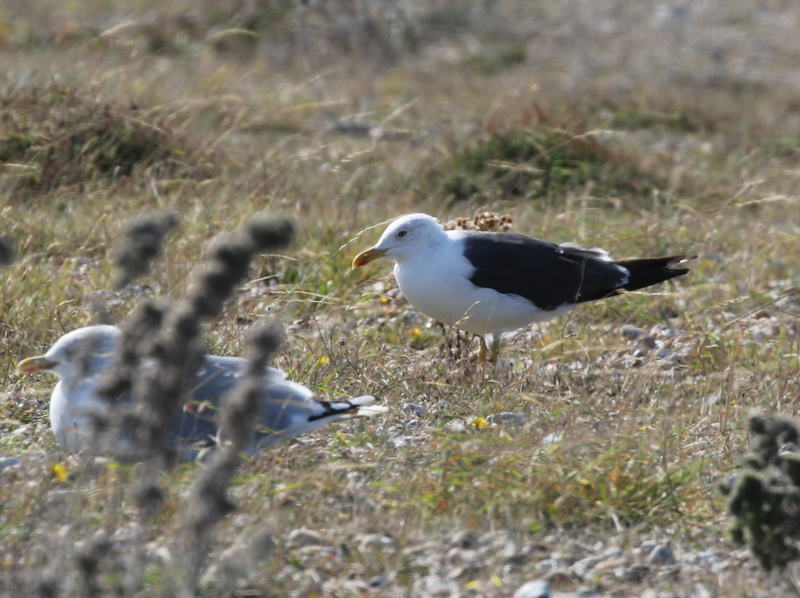
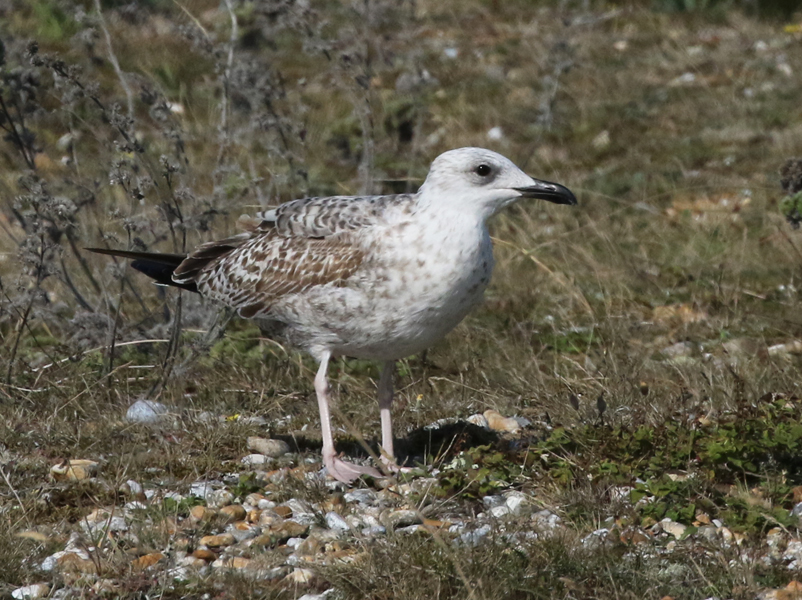
 Posted in
Posted in  Tags:
Tags: 










